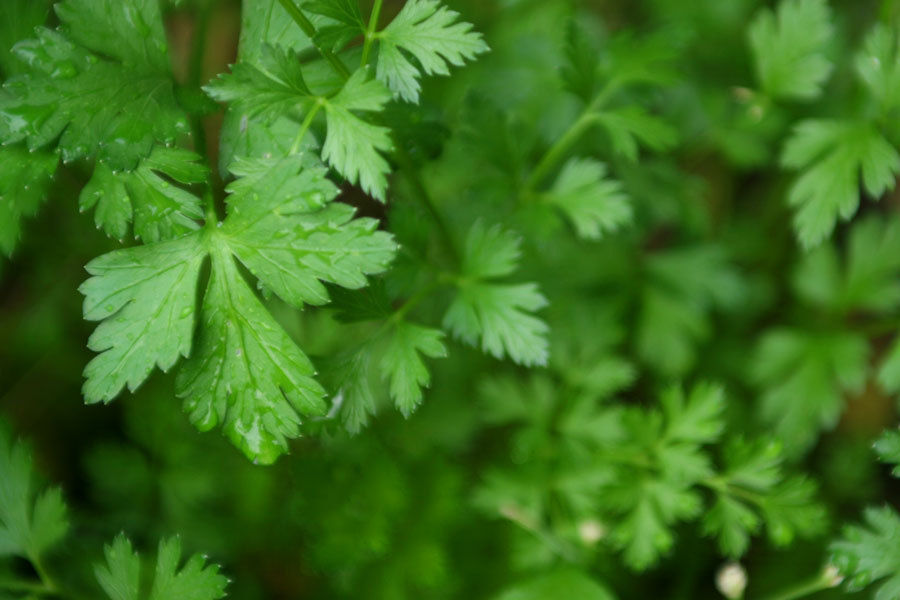Growing Mint at Home: Tips and Tricks
- rehobothorganicfarm
- Oct 20
- 4 min read
Mint is a versatile herb that grows well in many climates. It is useful in cooking, medicine, and even as a natural pest repellent. Growing mint at home is simple and rewarding. You can cultivate it in pots, garden beds, or even indoors. This guide will help you start your own mint garden with clear, practical steps.
Starting Your Home Mint Gardening Project
Mint grows best in well-drained soil with moderate moisture. It prefers partial shade but can tolerate full sun if watered regularly. Before planting, prepare your soil by loosening it and mixing in organic compost. This improves fertility and drainage.
Choose a container or garden spot that allows mint to spread. Mint can be invasive, so containers help control its growth. Use pots with drainage holes to prevent waterlogging.
When selecting mint varieties, consider your needs. Peppermint and spearmint are popular for culinary use. Chocolate mint and apple mint offer unique flavors. You can buy seedlings or start from cuttings.
Plant mint about 12 to 18 inches apart. If planting in pots, use a container at least 12 inches wide. Water the plants immediately after planting to settle the soil.

Essential Care Tips for Home Mint Gardening
Mint requires regular care to thrive. Here are the key points to remember:
Watering: Keep the soil consistently moist but not soggy. Water when the top inch of soil feels dry.
Sunlight: Provide 3 to 4 hours of direct sunlight or bright indirect light daily.
Fertilizing: Use organic fertilizer once a month during the growing season. Avoid over-fertilizing as it can reduce flavor.
Pruning: Trim mint regularly to encourage bushy growth. Cut back flowering stems to maintain leaf production.
Pest control: Watch for aphids and spider mites. Use neem oil or insecticidal soap if needed.
Mulching around the plants helps retain moisture and suppress weeds. Use organic mulch like straw or shredded leaves.
How Long Does It Take to Grow a Mint?
Mint grows quickly compared to many herbs. From planting, you can expect:
Seedlings or cuttings: New shoots appear within 1 to 2 weeks.
Establishment: Plants become well-rooted in 3 to 4 weeks.
Harvest: You can start harvesting leaves about 8 weeks after planting.
Regular harvesting encourages new growth. Pick leaves in the morning for the best flavor. Avoid removing more than one-third of the plant at a time to keep it healthy.
If you grow mint indoors, growth may be slower due to less light. Use grow lights if necessary to speed up development.

Propagating Mint for Continuous Supply
Mint is easy to propagate. You can multiply your plants using these methods:
Stem cuttings: Cut a 4 to 6 inch stem below a node. Remove lower leaves and place the cutting in water or moist soil. Roots develop in 1 to 2 weeks.
Division: Dig up an established plant and separate the root clumps. Replant each section in a new pot or garden spot.
Layering: Bend a low stem to the ground and cover it with soil. Roots form where the stem touches the soil. Cut and transplant after roots develop.
Propagation helps maintain a fresh supply of mint without buying new plants. It also allows you to share plants with neighbors or friends.
Using Mint in Your Daily Life
Mint has many uses beyond cooking. Here are some practical ideas:
Culinary: Add fresh mint leaves to tea, salads, chutneys, and desserts.
Medicinal: Mint tea soothes digestion and relieves headaches.
Aromatherapy: Crush leaves to release a refreshing scent that reduces stress.
Pest control: Place mint leaves near windows or doors to repel ants and mosquitoes.
Dry excess mint leaves for later use. Hang small bunches upside down in a dry, dark place. Store dried leaves in airtight containers.
Growing mint at home is a sustainable way to enjoy fresh herbs year-round. It supports organic farming practices and reduces the need for store-bought herbs.
For more information on growing mint at home, visit Rehoboth Organic Farms. They provide quality organic mint plants and expert advice tailored for local gardeners.
Maintaining Your Mint Garden Year-Round
Mint is a perennial herb, meaning it can live for several years with proper care. To keep your mint garden productive:
Winter care: In colder months, protect outdoor plants with mulch or move pots indoors.
Soil health: Refresh soil every 1 to 2 years by adding compost or replacing potting mix.
Pest monitoring: Check plants regularly for signs of disease or pests.
Harvesting schedule: Continue harvesting leaves throughout the growing season to prevent overgrowth.
Rotate your mint plants with other herbs or vegetables to maintain soil balance. Companion planting with basil or tomatoes can improve growth and reduce pests.
By following these steps, you can enjoy a thriving mint garden that benefits your kitchen and your environment.
This guide provides clear, actionable advice for anyone interested in home mint gardening. With patience and care, you can grow healthy mint plants that enhance your cooking and support organic farming goals in Tamil Nadu.















Comments